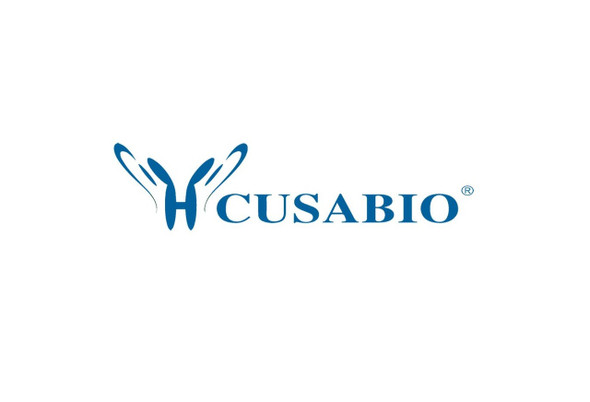Cusabio Human Recombinants
Recombinant Human 26S proteasome non-ATPase regulatory subunit 11 protein (PSMD11) | CSB-RP005754h
- SKU:
- CSB-RP005754h
- Availability:
- 13 - 23 Working Days
Description
Recombinant Human 26S proteasome non-ATPase regulatory subunit 11 protein (PSMD11) | CSB-RP005754h | Cusabio
Alternative Name(s): 26S proteasome regulatory subunit RPN626S proteasome regulatory subunit S926S proteasome regulatory subunit p44.5
Gene Names: PSMD11
Research Areas: Cell Biology
Organism: Homo sapiens (Human)
AA Sequence: AAAAVVEFQRAQSLLSTDREASIDILHSIVKRDIQENDEEAVQVKEQSILELGSLLAKTGQAAELGGLLKYVRPFLNSISKAKAARLVRSLLDLFLDMEAATGQEVELCLECIEWAKSEKRTFLRQALEARLVSLYFDTKRYQEALHLGSQLLRELKKMDDKALLVEVQLLESKTYHALSNLPKARAALTSARTTANAIYCPPKLQATLDMQSGIIHAAEEKDWKTAYSYFYEAFEGYDSIDSPKAITSLKYMLLCKIMLNTPEDVQALVSGKLALRYAGRQTEALKCVAQASKNRSLADFEKALTDYRAELRDDPIISTHLAKLYDNLLEQNLIRVIEPFSRVQIEHISSLIKLSKADVERKLSQMILDKKFHGILDQGEGVLIIFDEPPVDKTYEAALETIQNMSKVVDSLYNKAKKLT
Source: E.coli
Tag Info: N-terminal GST-tagged
Expression Region: 2-422aa
Sequence Info: Full Length of Mature Protein
MW: 74.3 kDa
Purity: Greater than 90% as determined by SDS-PAGE.
Relevance: Component of the lid subcomplex of the 26S proteasome, a multiprotein complex involved in the ATP-dependent degradation of ubiquitinated proteins. In the complex, PSMD11 is required for proteasome assbly. Plays a key role in increased proteasome activity in bryonic st cells (ESCs): its high expression in ESCs promotes enhanced assbly of the 26S proteasome, followed by higher proteasome activity.
Reference: Molecular cloning and expression of subunit 9 of the 26S proteasome.Hoffman L., Rechsteiner M.FEBS Lett. 404:179-184(1997)
Storage: The shelf life is related to many factors, storage state, buffer ingredients, storage temperature and the stability of the protein itself. Generally, the shelf life of liquid form is 6 months at -20?/-80?. The shelf life of lyophilized form is 12 months at -20?/-80?.
Notes: Repeated freezing and thawing is not recommended. Store working aliquots at 4? for up to one week.
Function: Component of the 26S proteasome, a multiprotein complex involved in the ATP-dependent degradation of ubiquitinated proteins. This complex plays a key role in the maintenance of protein homeostasis by removing misfolded or damaged proteins, which could impair cellular functions, and by removing proteins whose functions are no longer required. Therefore, the proteasome participates in numerous cellular processes, including cell cycle progression, apoptosis, or DNA damage repair. In the complex, PSMD11 is required for proteasome assembly. Plays a key role in increased proteasome activity in embryonic stem cells (ESCs)
Involvement in disease:
Subcellular Location: Nucleus, Cytoplasm, cytosol
Protein Families: Proteasome subunit S9 family
Tissue Specificity: Highly expressed in embryonic stem cells (ESCs). Expression decreases as ESCs differentiate.
Paythway:
Form: Liquid or Lyophilized powder
Buffer: If the delivery form is liquid, the default storage buffer is Tris/PBS-based buffer, 5%-50% glycerol. If the delivery form is lyophilized powder, the buffer before lyophilization is Tris/PBS-based buffer, 6% Trehalose, pH 8.0.
Reconstitution: We recommend that this vial be briefly centrifuged prior to opening to bring the contents to the bottom. Please reconstitute protein in deionized sterile water to a concentration of 0.1-1.0 mg/mL.We recommend to add 5-50% of glycerol (final concentration) and aliquot for long-term storage at -20?/-80?. Our default final concentration of glycerol is 50%. Customers could use it as reference.
Uniprot ID: O00231
HGNC Database Link: HGNC
UniGene Database Link: UniGene
KEGG Database Link: KEGG
STRING Database Link: STRING
OMIM Database Link: OMIM









